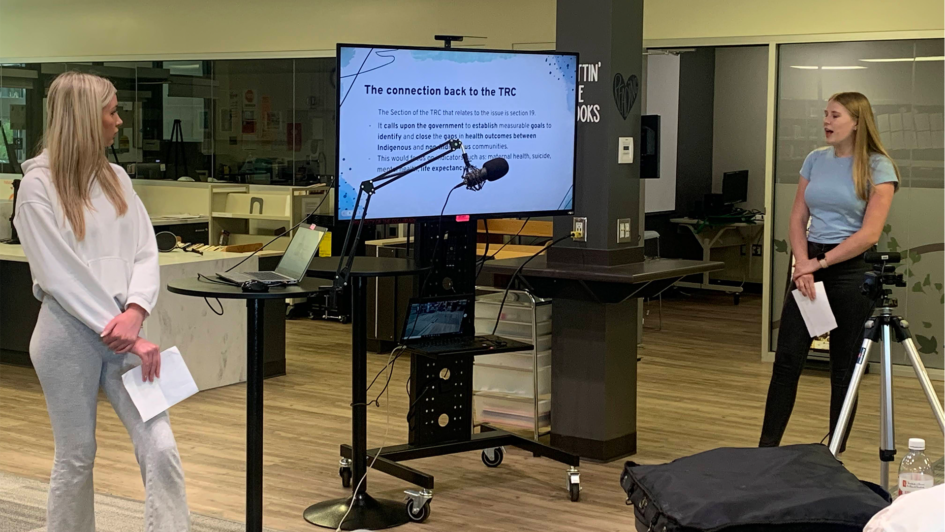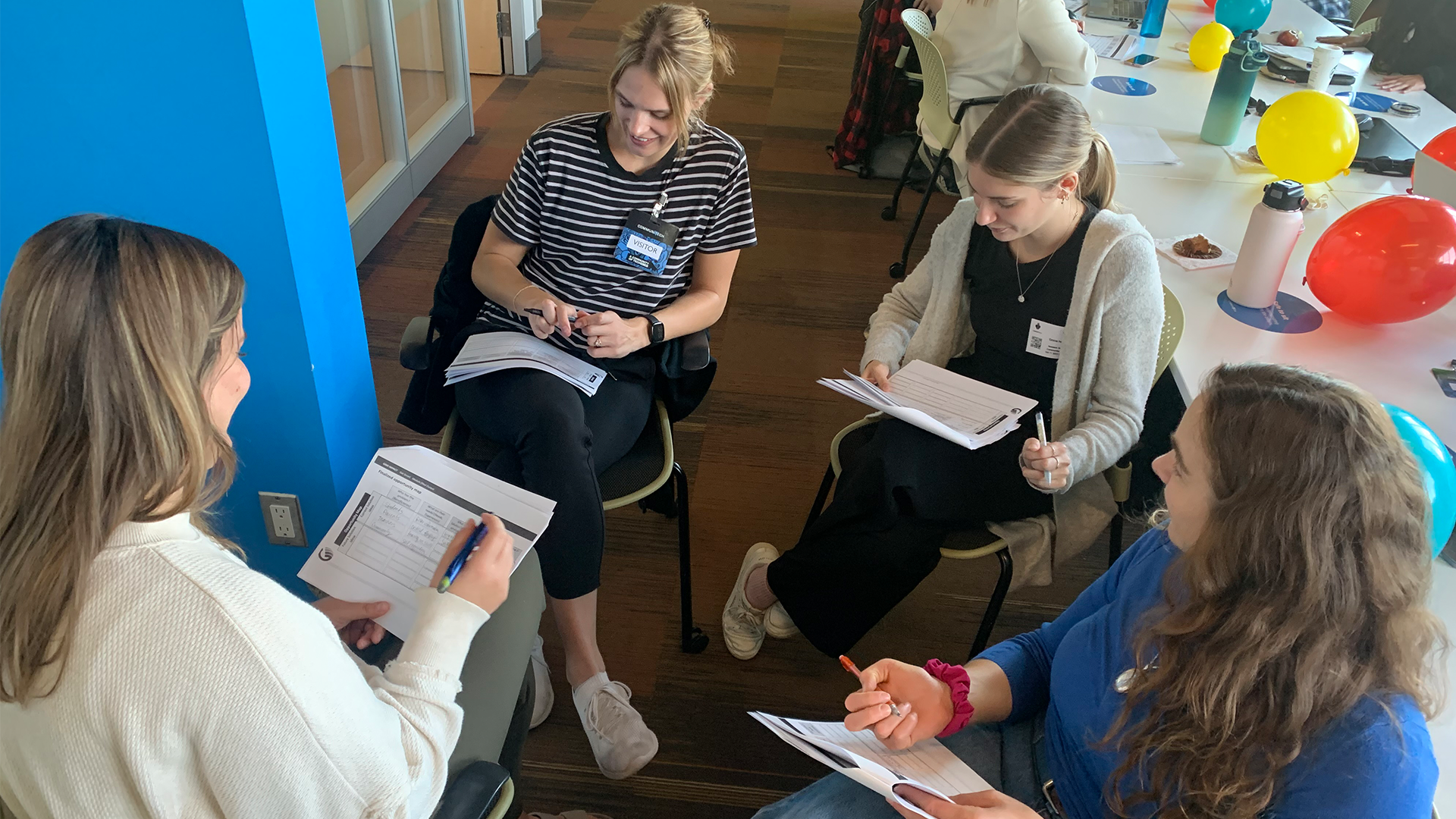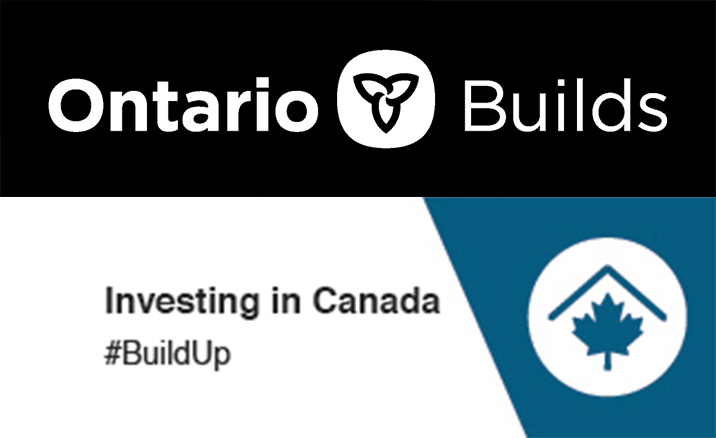
October 21st, 2022
Students at five secondary schools in the Waterloo Region District School Board (WRDSB) are becoming better prepared for the world that they will graduate into thanks to a design thinking approach by their educators. The approach recognizes that when current students enter the working world, they will be facing problems we don’t yet know, and doing jobs that have yet to be created.
With this challenge in mind, and recognizing the Waterloo Region community’s reputation as a hub of innovation in Ontario and Canada, the WRDSB partnered with Smart Waterloo Region (SWR). Together, we are supporting a “ground-up” approach for WRDSB educators in learning how they can use the Global Innovation Management Institute’s (GIMI) Impact Program in their classrooms to inspire students to take a design thinking approach to solving real-world problems in their communities.
Grayson Bass is the manager of the Smart Waterloo Region Innovation Lab, and shared some insight on what the partnership means for all in our community.
“Both the WRDSB and the Region of Waterloo have united with a goal of making Waterloo Region the best community for children and youth. Our partnership with the WRDSB allows us to connect with and support educators, students, and communities, as we help them implement the GIMI Impact Program in their classrooms. I could not be happier with the results and how we have been able to partner with WRDSB,” said Bass. “The results are inspiring.”
Carli Parsons, Sandy Millar and Stephen Gray are three secondary vice principals who are helping to lead this effort in the WRDSB, and described how this effort began with three rural secondary schools during the last school year. This included Elmira District Secondary School (EDSS), Southwood Secondary School (SSS) and Waterloo-Oxford District Secondary School (WODSS).
“Innovation really does begin on the fringes, so let’s take these three rural schools and we will pilot this innovation curriculum at our three sites,” said Parsons. “The idea was to encourage students to look within the school and within their community for problems and challenges and use this design thinking curriculum to propose solutions.”
The pilot program that impacted over 300 students was a resounding success, Millar explained, and now the effort has entered phase two, expanding to include two additional secondary schools: Cameron Heights Collegiate Institute (CHCI) and Jacob Hespeler Secondary School (JHSS) led by Vice Principals Christine Moser and Adrian Blair. The reach of the program this year will impact approximately 800 secondary students.
Design Thinking in the Classroom
To help prepare to introduce this framework to their classrooms, teachers from each of the five secondary schools came together at Communitech in Kitchener to learn about the GIMI Impact Framework, and how it can be applied to a range of subjects.

During the first year of the program, teachers used the design thinking approach to support students at all levels in engaging with a variety of subjects, from math, to geography, to English, to Indigenous studies, to science.
“One teacher ran his entire English class as a design thinking challenge,” said Parsons. “The students went through the design thinking process over the course of the semester. The learning and creativity that happened in that classroom was incredible.”
Whatever the subject, students begin by identifying a problem that either they, or someone else in their community has experienced. They then start to assess possible solutions to the issue, by thinking about the user’s experience.
Tapping Into Students’ Passion, Joy, Data and Desire to Make a Difference
“They’re identifying something that’s important to them,” said Gray, helping students to uncover their passion – a subject or topic they care about, and are interested in learning more about.
“Working on something that you’re passionate about, it’s easy to find joy in it,” Gray said.
As students work through identifying the pinch point of the problem, they engage in empathy work to better understand the end users.
“They conducted interviews, ran case studies and created surveys within both the school and the community,” said Parsons. “Tapping into real data and anecdotal evidence to support their work.”
It all culminates in a pitch day at each school, where students pitch their solution to representatives from Smart Waterloo Region (SWR), for the opportunity to see their plan funded and executed in the real world.
“You can see the passion, excitement and solutions that each of the students involved brings to their projects,” said Bass. “We’re so excited to see what the students will accomplish this year and we can’t wait to fund a second round of projects!”
“We’re looking at kids driving their learning, working through processes and actually seeing their projects get funded,” said Millar.
This past school year, some of the the funded projects included:
- Smartphone application focused on water quality testing
- Gender-affirming clothing fund
- Territorial acknowledgment plaques at regional airports
- Sexual assault and crisis training program
Beyond seeing their visions come to reality, the students are building skills in the classroom that will better prepare them for whatever their post-secondary pathway may be, Gray explained. These are also known as Global Competencies – attributes that help students meet the shifting and ongoing demands of life, work and learning.
“It’s communication, collaboration, critical thinking,” he said. “It’s hard to go through this process and not gain these skills, based on the framework that’s been laid out.”
One great strength of this approach, is that it unlocks the students’ own knowledge and experiences as assets in achieving academically, and ultimately, in earning them credits in secondary school. Their own lived experiences are engaged as they work to identify a problem or concern in their community, and set about working together to find a solution.
“Your experience matters and your experience is going to contribute to your success in school,” said Parsons. “You can make change.”
Transforming Long-Held Teaching Methods
As they prepare for another year of the GIMI Impact Program in the WRDSB, Parsons, Millar and Gray along with all of the educators involved are looking forward to what’s ahead. For many educators, this process involves letting go of long-held methods in their teaching, and rethinking their entire approach. Though it won’t be easy, they know just how much it will help to support the academic success of all the students who take part. Many of the educators spoke about increases to their own sense of joy and well-being as they went through the process.
“The students are excited and engaged in their learning, and so are their teachers,” said Parsons. “It’s a lot of work, and a lot of coordination, but the rewards are just so substantial.”
Overall, this approach allows students to bring learning to life in the real-world, by giving them opportunities for leadership in their own communities, through the learning they’re doing in the classroom. It allows them to combine what they’ve learned across subject areas, bringing all of their skills and talents together for a project they care deeply about.
Categories: Feature Tags: Design Thinking · GIMI · Global Innovation Management Institute’s (GIMI) · Impact Program · innovation · Region of Waterloo · Smart Waterloo Region

